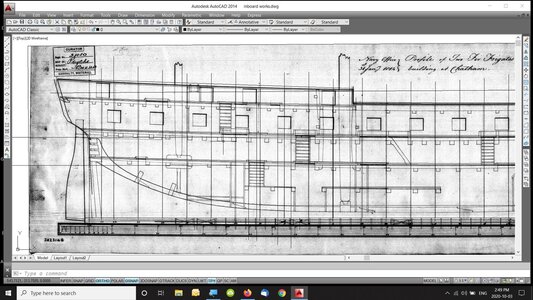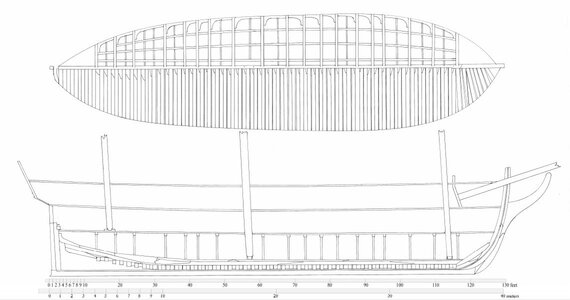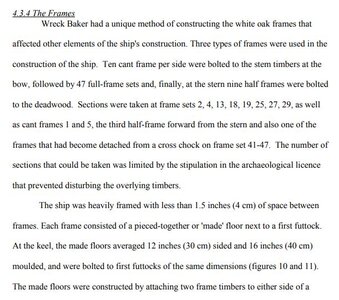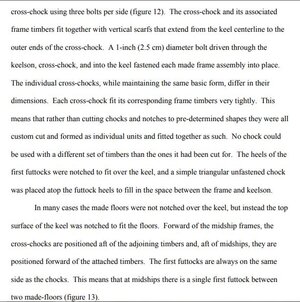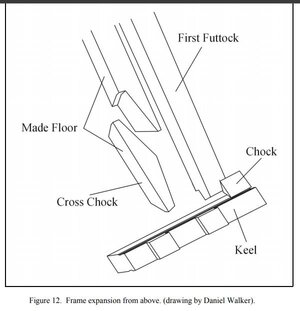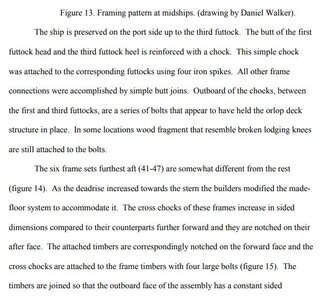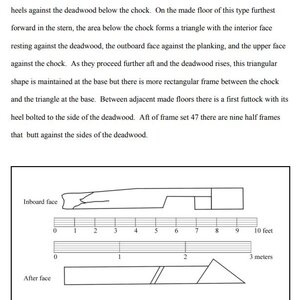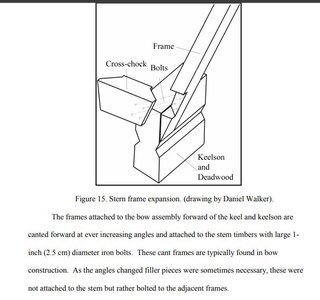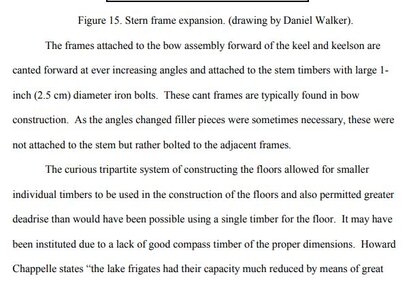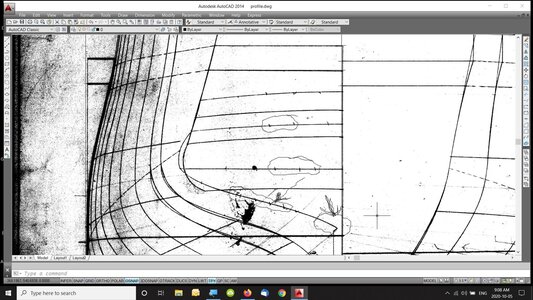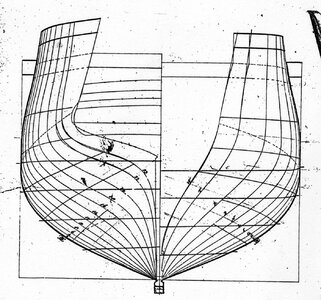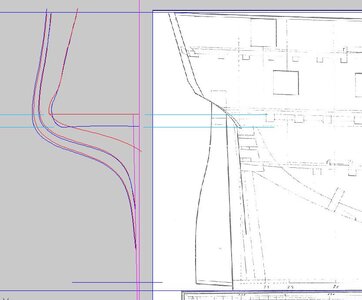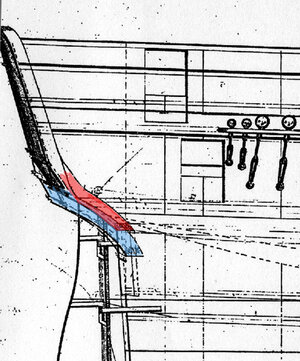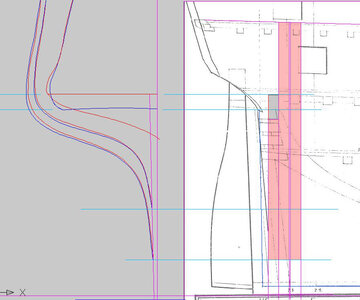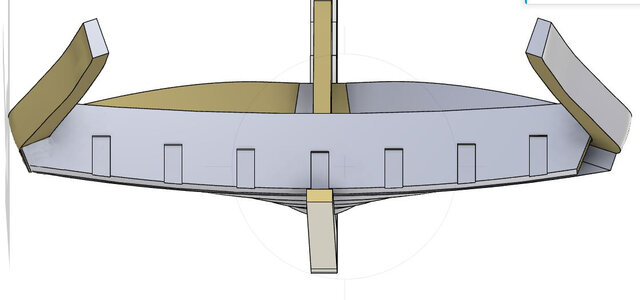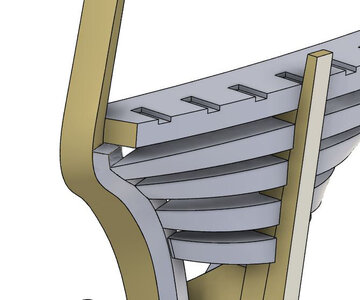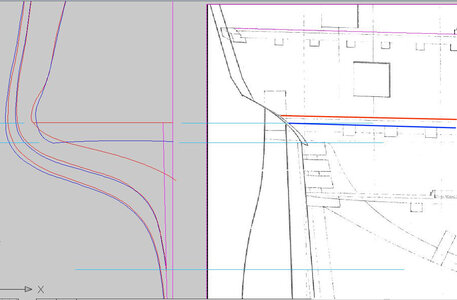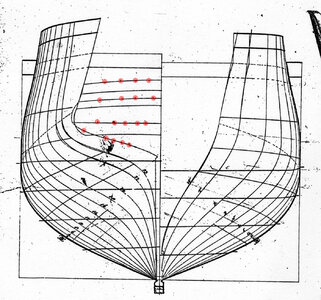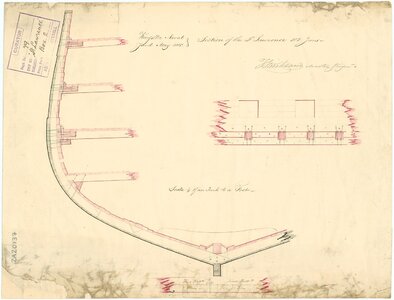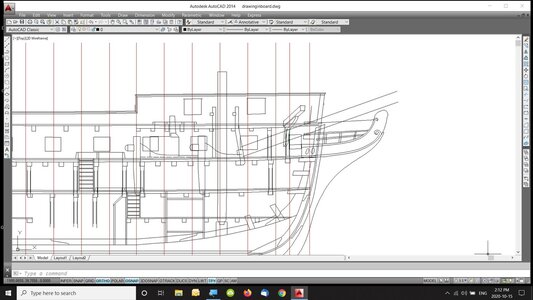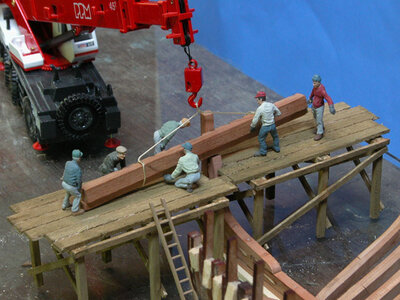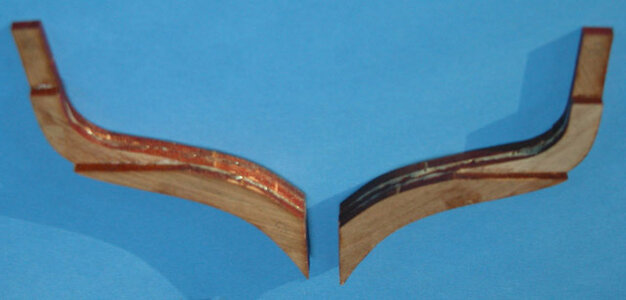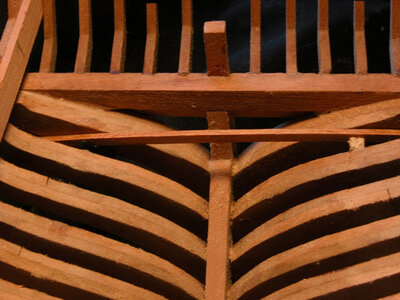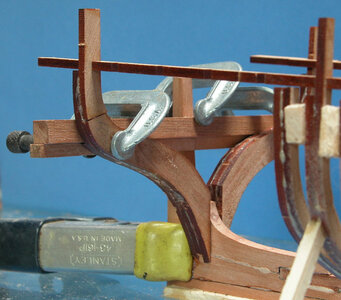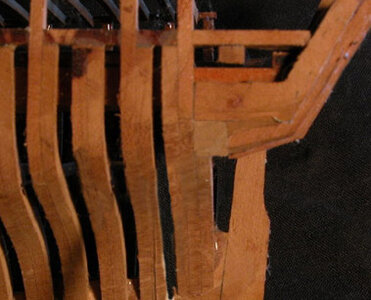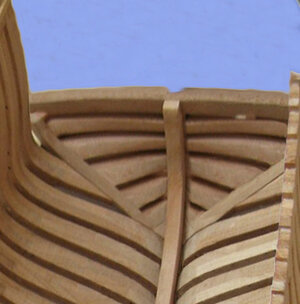- Joined
- Jul 22, 2014
- Messages
- 134
- Points
- 78

As you said, I have reviewed the other ships and noted that square frames were used.
All the ships built at Kingston wee unique and quite possibly one of a kind.
I haven't gotten to the decks yet and already I suspect there was something different there.
I watched a video on installing a square frame on a wood vessel and it has a ledge that the back of the frame sits on but the front edge buts to the deadwood. It still gives the impression it is just bolted to the deadwood. Unique.
On the Princess Charlotte, walker contends by archeological data that doubling up frames was used. This was something I lookedat the startof the framing, but can't see that now.
The St.Lawrence was different because of it's size but still used square frames.
The only thing I am thinking of now is the ship was designed and manufactured in England, and cants were used but bell/Strickland used methods in Canada that were tried and tested some what already.
The plans showed cant frame ideas at the transoms, and remained because they could not "erase" what was there. Just draw over or use ///'s through something drawn that they didn't use. I saw this used repeatedly through out the drawings.
As far as the inboard works drawings there was only what I just showed above. The profile withe the body plans shows something different. Nothing.
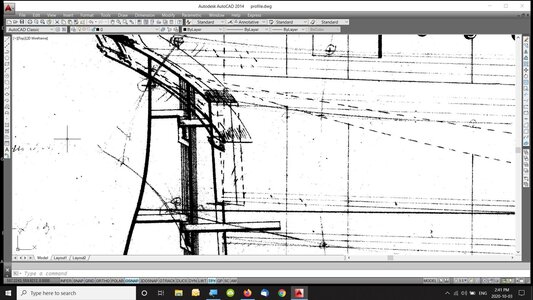
All the ships built at Kingston wee unique and quite possibly one of a kind.
I haven't gotten to the decks yet and already I suspect there was something different there.
I watched a video on installing a square frame on a wood vessel and it has a ledge that the back of the frame sits on but the front edge buts to the deadwood. It still gives the impression it is just bolted to the deadwood. Unique.
On the Princess Charlotte, walker contends by archeological data that doubling up frames was used. This was something I lookedat the startof the framing, but can't see that now.
The St.Lawrence was different because of it's size but still used square frames.
The only thing I am thinking of now is the ship was designed and manufactured in England, and cants were used but bell/Strickland used methods in Canada that were tried and tested some what already.
The plans showed cant frame ideas at the transoms, and remained because they could not "erase" what was there. Just draw over or use ///'s through something drawn that they didn't use. I saw this used repeatedly through out the drawings.
As far as the inboard works drawings there was only what I just showed above. The profile withe the body plans shows something different. Nothing.



